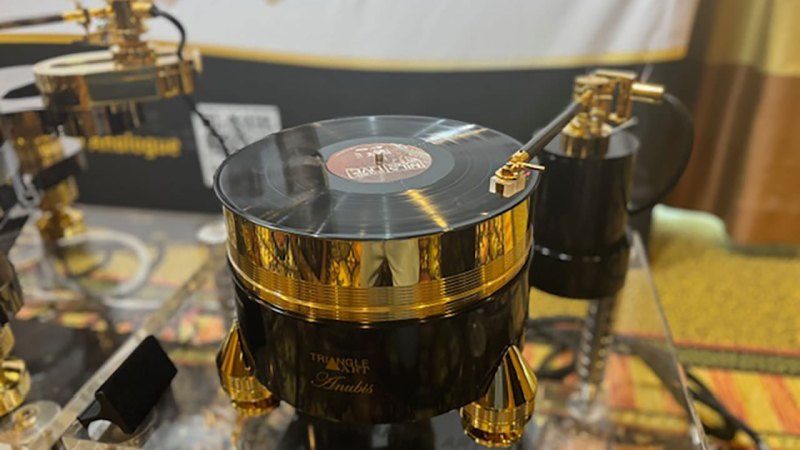
Vinyl records, recently considered relics of a bygone era, have experienced a remarkable resurgence in recent years. Despite the clear dominance of digital streaming, vinyl has carved out a niche among audiophiles and younger generations alike. However, beneath the surface of this analog revival is a complicated technical story and a commentary on how digital technology impacts our lives, the appeal of listening to music in the order that the artist’s intended, collectability and so much more.
The Resurgence of Vinyl in a Digital Age
According to the Recording Industry Association of America (RIAA), vinyl record sales have seen a consistent increase over the past decade. In 2023, vinyl records generated over $1 billion in revenue, marking a significant milestone for the format. This resurgence is particularly intriguing given the overwhelming market share of digital streaming services. While some figures vary, it’s estimated that physical media, including both vinyl records and CDs, account for less than 10 percent of total music sales, with streaming services dominating the landscape.
Millennials and Audiophile Vinyl
The vinyl revival isn’t solely driven by older generations yearning for nostalgia; Millennials and Gen Z have also embraced the format. This trend raises questions about the motivations behind this shift. Despite being digital natives, many young people are drawn to the tangible and tactile experience that vinyl offers. In an era where music is often consumed passively through playlists and algorithms, vinyl demands active engagement. Listeners must handle records carefully, place the needle, and listen to albums in their entirety, fostering a deeper connection to the music. This analog “ritual” is what many say is the main draw for them to the aged but lovable audiophile format. Many audiophile retailers are teaching today’s music-loving youth how to set-up turntables, how to clean their records and how to perfect their own, personal audiophile ritual.
The physicality of vinyl provides a respite from the daily omnipresence of digital technology in the lives of younger people. A study by the Seattle Children’s Research Institute revealed that teenagers aged 13 to 18 spend, on average, 1.5 hours of their 6.5-hour school day on their smartphones. At the same time death by suicide is rampant with today’s youth in the United States with social media being a major cause of stress. Listening to music on vinyl is a possible antidote with a very high cool factor. Listening to music can lower one’s blood pressure in mere minutes. Listening to even a modest audiophile or surround sound home theater system can also help ease some anxiety.
The Increasingly High Cost of Vinyl
Embracing vinyl comes with financial considerations. New vinyl releases often carry premium price tags, and the cost of vintage records has surged due to increased demand. It is not uncommon to see vinyl releases of albums that came to stores decades ago for $30, $40, $50 and even as much as $100 per LP. The days of buying worn but affordable vinyl is gone as collectors and speculators alike have been snatching up records at pawn shops, flea markets and even buying them directly from collectors.
Storing vinyl can be expensive and bulky. CDs are small and lightweight. LPs are not. They can only really be stored vertically and they take up a lot of space. In the digital domain, you can have over a million songs on a solid state hard drive that is smaller than a deck of cards. In terms of storage, access to music and cost of storage – digital media easily wins out – but that’s not the real draw of why people enjoy and collect vinyl.
Vinyl is Not HD
One of the most debated aspects of vinyl is its sound quality.
Vinyl records, at their best, have a maximum dynamic range of approximately 70 decibels, which is dramatically lower than that of CDs and high-resolution digital formats. This limitation can result in compression that affects the nuances of the music.
The characteristic “warmth” of vinyl is often attributed to harmonic distortion introduced by the physical interaction between the stylus and the record groove. While some listeners find this distortion pleasing, it’s technically a coloration of the original sound—an irony considering that audiophiles often invest heavily in equipment to minimize distortion. Why buy a $20,000 stereo preamp that has measurably 0.00001 percent distortion and then feed a highly distorted source into the component. Such a system design makes no sense but it happens in the audiophile community all of the time.
The Fragility and Maintenance of Vinyl
Vinyl records are inherently physically fragile. Each play can introduce wear, and factors like dust, scratches, and improper handling can degrade sound quality over time. To preserve their collections, vinyl enthusiasts often invest in cleaning tools ranging from basic brushes to advanced ultrasonic cleaners. This maintenance routine requires time, effort, and additional expense, underscoring the commitment involved in the analog listening experience. It is also a key part of the ritual and few audiophiles complain about keeping their vinyl collection in mint condition.
Conclusion
The revival of vinyl records has a lot to do with digital burnout. On paper digital audio can reproduce the live musical event or, more specifically, what’s on the master recording better than vinyl. The formats are not even close in terms of sonic performance. So then why is vinyl so popular? Ask anybody watching the Apple TV sci-fi show, Severance, about the topic of work/life balance. Few of us have it and all of us want to achieve the lifestyle goal. A little less social media paired with a little less blue light can make us more happy. Then factor in being able to have more, meaningful art in your life in a fun, unique format and it starts to explain the resurgence of vinyl records.
CONTACT:
Company Name: Nazarian Films
Contact Person: Eliott Nazarian
Eliott@nazarianfilms.com
Los Angeles
California
Www.Nazarianfilms.com
SOURCE: Nazarian Films